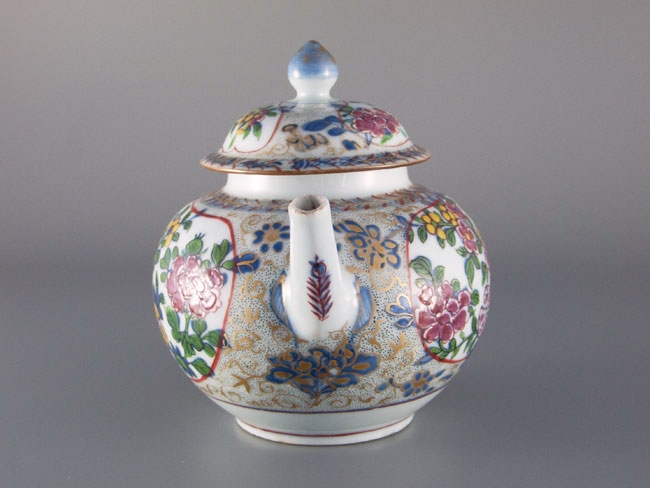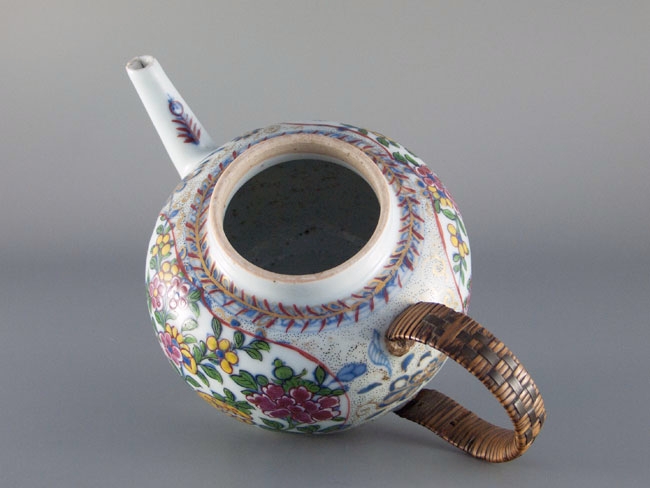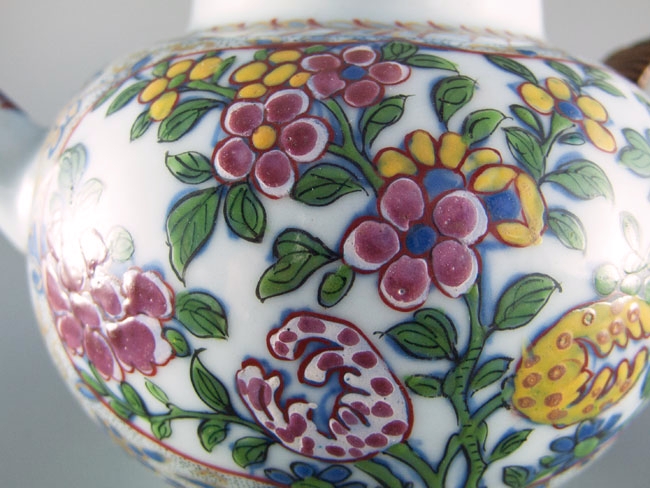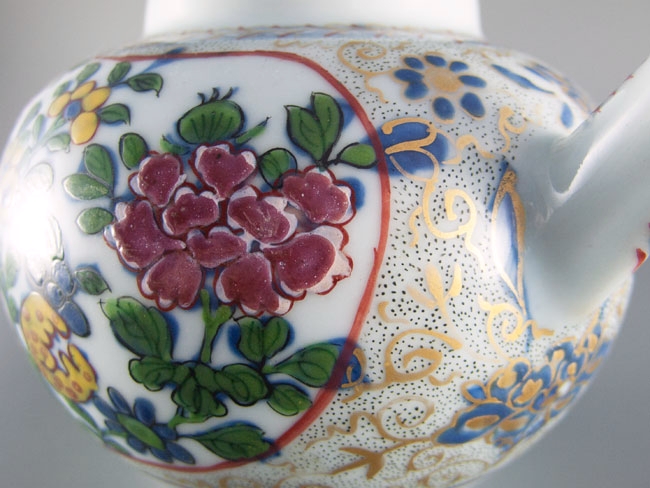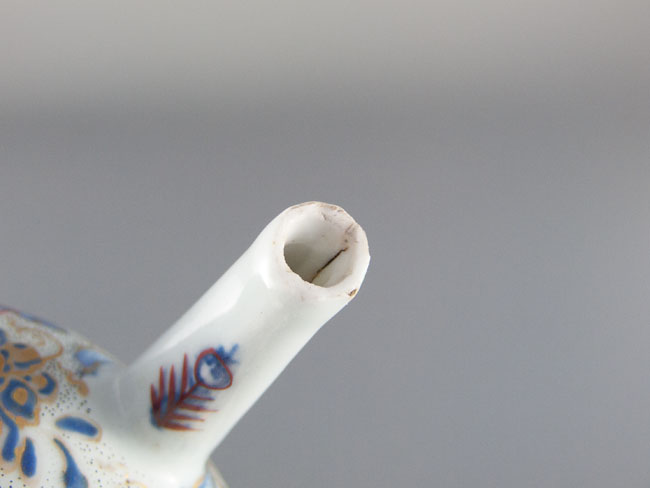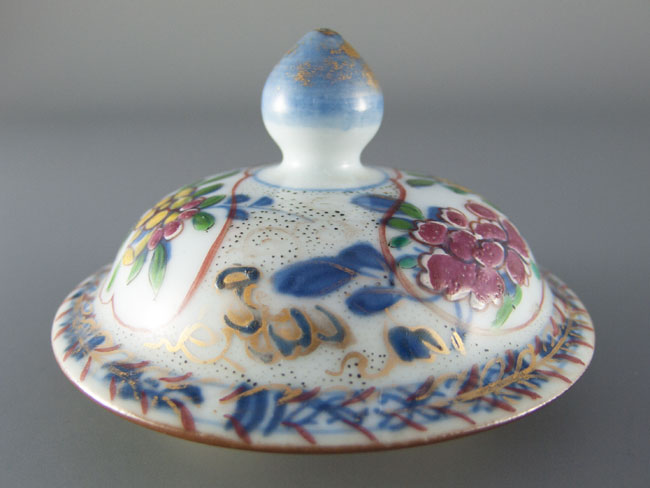A Chinese Teapot and Cover, decorated in London, circa 1740-50
When this small teapot arrived in England, the only decoration it would have possessed is the underglaze blue flower painting which can just be seen beneath the enamel decoration. Soon after its arrival in England, the teapot was decorated in London with an elaborate pattern in the famille rose palette. Both sides are painted with a red-lined cartouche reserved on a black seeded ground. The cartouche contains trailing peonies, leafy stems, smaller flowers, and Buddha’s hand fruit (Citrus medica var. sarcodactylis). The seeded ground is also decorated with blue enamel flowers with gilt highlights, and arabesque swirls. The design is repeated on the cover. The woven rattan handle is a replacement, described in the contemporary adverts of so-called ‘china menders’, such as Coombs of Bristol, as Neat work’d basket Handles for Tea-Pots.
The use of opaque white and pink enamels, particularly on the peonies, and a black seeded ground are characteristics of London decoration referred to as ‘Limehouse Class’ as it is known to occur on porcelain manufactured at Limehouse during the 1740s.
Condition: Replacement handle. Light wear to the enamel and gilt decoration. Flaws and blemishes, along with manufacturing faults, such as the firing crack within the spout. No restoration.
Dimensions: Height (to top of knop)
The Early James Giles and his Contemporary London Decorators, Stephen Hanscombe (Stockspring Antiques Publications, 2008).
European Decoration on Oriental Porcelain, 1700-1830, Helen Espir (Jorge Welsh Books, 2005).
The Watney Collection of Chinese Porcelain Decorated in Holland and England (Bonhams, 2003).


